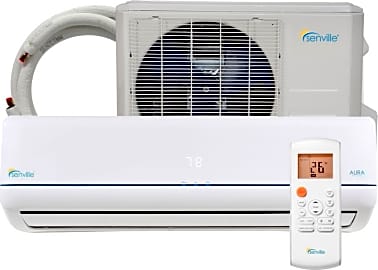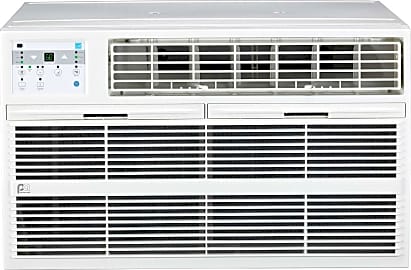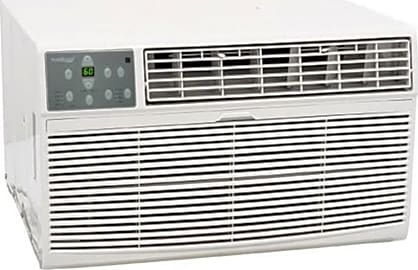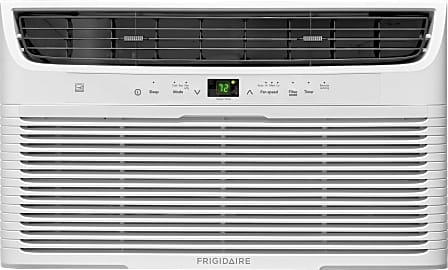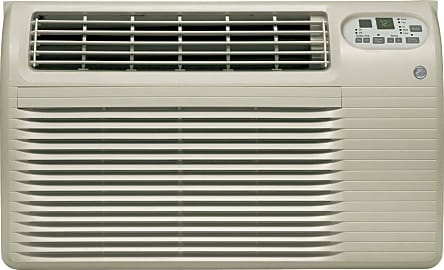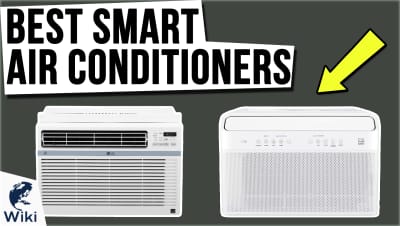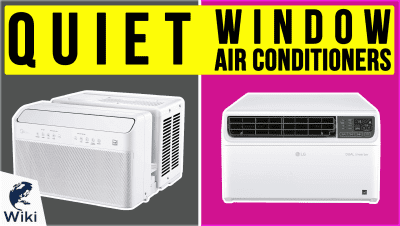The 7 Best Wall Air Conditioners

This wiki has been updated 40 times since it was first published in March of 2015. Whether you prefer to create a more permanent solution or you simply have oddly-shaped windows that won't accommodate an AC unit, one of these in-wall air conditioners may be a perfect solution. We've included single-room options that can cool a moderately-sized space as well as some two-way heat pumps that provide efficient climate control to larger areas during all four seasons. When users buy our independently chosen editorial picks, we may earn commissions to help fund the Wiki.
Editor's Notes
August 06, 2019:
In-wall AC units are a relatively specialized breed that can solve your cooling problems, but also be a serious pain to install. A lot of people looking for one are doing so to replace an older and out-of-date or simply broken unit. The Friedrich Chill or Koldfront are both great choices for that, as they're comparable to today's most efficient window ACs and are designed specifically for wall installation. The GE and Keystone are even more efficient, in fact; the GE is particularly reliable, as you might expect from the company, and the Keystone is rated as one of the most efficient wall air conditioners currently available.
There's also a selection of high-end heat pumps, and we've included a couple of the more popular and accessible ones. These are generally more difficult in some ways to install, but may not require you to cut as big of a hole in your wall if you're putting one in for the first time. On the other hand, the need to route the system through your home will prove to be a completely different challenge, and you may end up having a professional come out and help with it. Heat pumps, however, are in some cases the only way to add powerful heating and cooling to homes, especially very old buildings.
What Exactly Is Conditioned Air, Anyway?
The air's temperature is reduced even more as it negotiates this valve.
Air conditioning works according to the same basic operating principle as refrigeration. And this is apt, as you can imagine your home, or car, or office as a closed environment where cool air is being locked in, thereby keeping the temperature low.
Most air conditioners draw hot air in from the outside. That air is immediately filtered through a compressor, along with some form of refrigerant (e.g., Freon or an equivalent type of hydrochlorofluorocarbon). That air's temperature increases as it is filtered through the compressor. The heated - and highly-pressurized - vapor is then passed into a condenser, which cools the air by way of coils. These coils are working in conjunction with the refrigerant.
The AC's refrigerant continues along with the air through a tiny hole which is known as an expansion valve. The air's temperature is reduced even more as it negotiates this valve. The now-frigid air and refrigerant make their way into an evaporator coil, where any remaining liquid is, well, evaporated. The ice-cold air is systematically blown out into a confined space via an exhaust fan. The excess refrigerant is cycled back and liquefied to begin the cooling process once more.
AC 101: A Troubleshooting Guide
When it comes to summer, a lot of people are only as good as their air conditioners allow them to be. With that in mind, we'd like to present a few easy-to-fix air conditioning problems. We have resigned these issues to everyday wall units. If you have an AC problem that is connected to a central cooling system, it's better to call in a professional who has some expertise.
This is an easy fix, as well, although you'd be wise to consult an owner's manual.
The most common issue with any window AC unit is that it takes to blowing out hot air. There are two recurring reasons for this. The first is that a screen is clogged, in which case all you need to do is remove the screen, which is located behind the front vent, then hose it down. The second major cause of hot air is a lack of coolant (AKA refrigerant). This is an easy fix, as well, although you'd be wise to consult an owner's manual. That manual can tell you what type of coolant to use, along with where to pour said coolant into the tank.
If your AC is on, but it isn't blowing any air, the first thing you'll want to check is the front vent. This vent is prone to getting closed unintentionally, thereby preventing any air from getting out. If your AC isn't turning on at all, check to see if any in-house circuits, or fuses have been tripped. If a circuit has blown, it's recommended that you reduce the amount of electricity you have pulling off that breaker.
If you've attempted each of these solutions to no avail, your unit may be in need of a more significant repair.
A Brief History Of The Air Conditioner
The earliest seeds of what we now regard as air conditioning lead back to Ancient Egypt, where moistened reeds were hung in windows. As the cold water on these reeds evaporated, it served to cool the air that was entering each room. Fast forward to the late 19th century, at which point certain advances had led to people storing or harvesting large chunks of ice (often by way of an early ice-making machine), which they could then place behind a fan, cooling the air that was blowing straight through.
The earliest seeds of what we now regard as air conditioning lead back to Ancient Egypt, where moistened reeds were hung in windows.
The first modern air conditioner was invented by an American man named Willis Carrier in 1904. Carrier based his invention on several early evaporation experiments that had been conducted by the likes of Benjamin Franklin and (Cambridge Professor) John Hadley. As air conditioners moved into mass production during the 1920s, the guiding principle continued to be that of using volatile liquids to cool the air as it passed through a series of coils or chambers.
Carrier had initially designed his AC to help solve a manufacturing problem. Too much heat was slowing down the gears at Mr. Carrier's place of business. Carrier's electro-mechanical cooling system solved the problem, and it also led to the realization that lower temperatures resulted in increased productivity. Carrier started his own air conditioning company in 1915. At first, this company was catering to corporate clients. But after the Depression, Carrier expanded his interests by offering cost-effective ways to cool the average home.
Innovations came quickly during the second half of the 20th century. Today, it is estimated that nearly 90 percent of all new homes in the U.S. have been designed with some type of central ventilation built in. What's more, the Carrier Corporation, which was originally known as the Carrier Air Company of America, has grown into a $13 billion business that employs a little over 45,000 workers.


